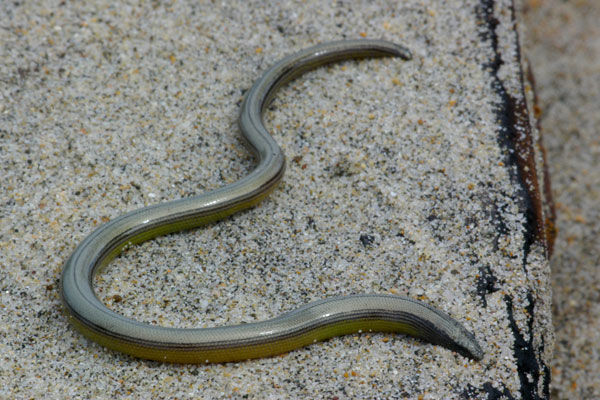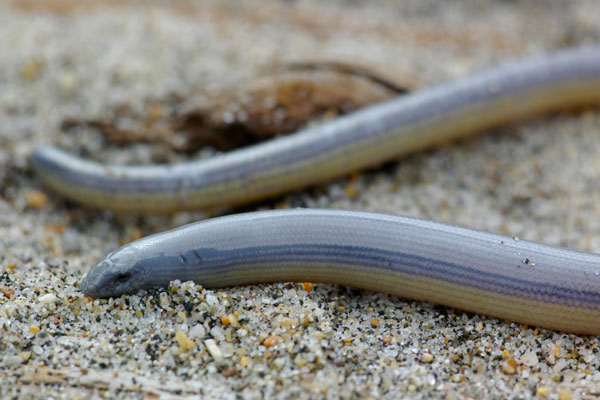San Francisco Chronicle, 9/18/13. "4 new species of legless lizards found in California."
BERKELEY, Calif. (AP) — Scientists in California have discovered four new and separate species of legless lizards — snakelike animals that burrow into sand or soil.
 |
| Looks kind of like a snake to me |
 |
| Here's my pretty face |
.... The biologists are trying to determine whether the lizards need protected status. Read more.
I was happy to finally see another one of these after twenty or so years. When I was a kid I saw a dozen or so at different times in southern California, but I hadn't stumbled across another since then.
Many references split this species into two subspecies: A. p. pulchra (Silvery Legless Lizard) and A. p. nigra (Black Legless Lizard), but more recent studies have concluded that the silvery and black variations are just points along a continuum of shades, and not separable subspecies." Note: The above legless lizard photographs were taken at Moss Landing (Monterey County), CA, by John Sullivan.
Reference, comparison with the European legless lizard - Legless lizard. Classification and Range -Legless lizards belong to the family Anguidae, a family of around 80 species that is largely confined to the Americas. Two species of this family occur in the Old World: the slow worm (Anguis fragilis) and the European legless lizard (Ophisaurus apodus). Although many members of this family lack limbs, this is not a characteristic of every anguid; many American anguid lizards have four well-developed limbs. European legless lizards, also called glass lizards, range from the Balkans as far as Istria (peninsula in northeastern Italy) and northeast Bulgaria. They are also found in Crimea, Caucasus and parts of southwest and central Asia. Habitat - The European legless lizard is normally found in fairly dry habitats, often frequenting rocky hillsides with some cover. These lizards can also be found in dry stone walls, embankments and stone piles. They are diurnal and crepuscular, and are often active after rainfall. Length and Weight -The European legless lizard is the largest lizard of its family, its average length (including tail) being 2-3 feet (.6-.9 m). The longest recorded European legless lizard was 4 feet (1.2 m). They normally weigh 11-21 ounces (300-600 g). Life Span - Up to 54 years in captivity. Diet - In the wild: The European legless lizard feeds on a variety of small mammals, bird eggs and invertebrates such as insects and earthworms. At the zoo - Crickets, mealworms and furred mice.
Posted by Kathy Meeh


4 comments:
So how long before they find these in the quarry. Wait, are we talking about lounge lizzards, everyone knows Pacifica had many!
Those lounge lizards are already squatting in the quarry.
I found one, what should I do with it?
Really, I can use some information on the understanding between snakes and the legless lizards.
Post a Comment